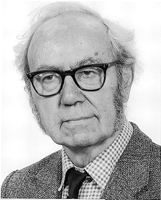


In 1949, the bioengineer Basil Martin Wright joined the
Medical Research Council pneumoconiosis unit at Llandough and was assigned the
responsibility of inventing a medical instrument that would measure the lung
function of asthma patients. The peak flow meter he patented was used for
patients participating in large-scale studies and was not portable. In
1970, a miniature version was developed. It became standard medical equipment in
doctors’ offices and could be used by asthmatics to self-monitor their
breathing. Three years ago, doctors and scientists began to question the
accuracy and consistency of peak flow meter readings. A
recent study shows there can be a 15% inaccuracy in readings across a variety of
peak flows which is causing the medical field to now demand a standard
calibrating system.
Before the invention of the pulse oximeter,
doctors had to rely on the tinge of their
patients’ flesh to determine the oxygen level of their patients’ blood.
If the skin color became a bluish tint, doctors knew their patients’
oxygen level was low indicating the patient was in trouble.
After Carl Matthes’ invention of the oximeter (ear probe) in
1935, doctors were able to continually observe the oxygen levels in
their patients’ bodies in a non-invasive manner. Thirty-five years later, in 1970, Hewlett-Packard scientists
found that an ear oximeter was much more precise if the
ear tissue was heated
 to 41 C. By 1974, Takuo Aoygai had figured out
that oxygen saturation could be measured by sending light through the
tissue. In 1978, William New, MD, PhD
invented the prot
to 41 C. By 1974, Takuo Aoygai had figured out
that oxygen saturation could be measured by sending light through the
tissue. In 1978, William New, MD, PhD
invented the prot otype for modern pulse oximetry. He discovered that
infrared and red light could be used to measure the color of the
blood. The more oxygen that is present, the redder the blood appears.
The latest breakthrough in pulse oximetry came last year when David
Benaron, MD, a professor at Stanford University, significantly improved
the device by enabling it to work even when a patient had no pulse.
otype for modern pulse oximetry. He discovered that
infrared and red light could be used to measure the color of the
blood. The more oxygen that is present, the redder the blood appears.
The latest breakthrough in pulse oximetry came last year when David
Benaron, MD, a professor at Stanford University, significantly improved
the device by enabling it to work even when a patient had no pulse.
Home Present Technology Future Technology Design Process Breakthroughs Consequences Bibliography